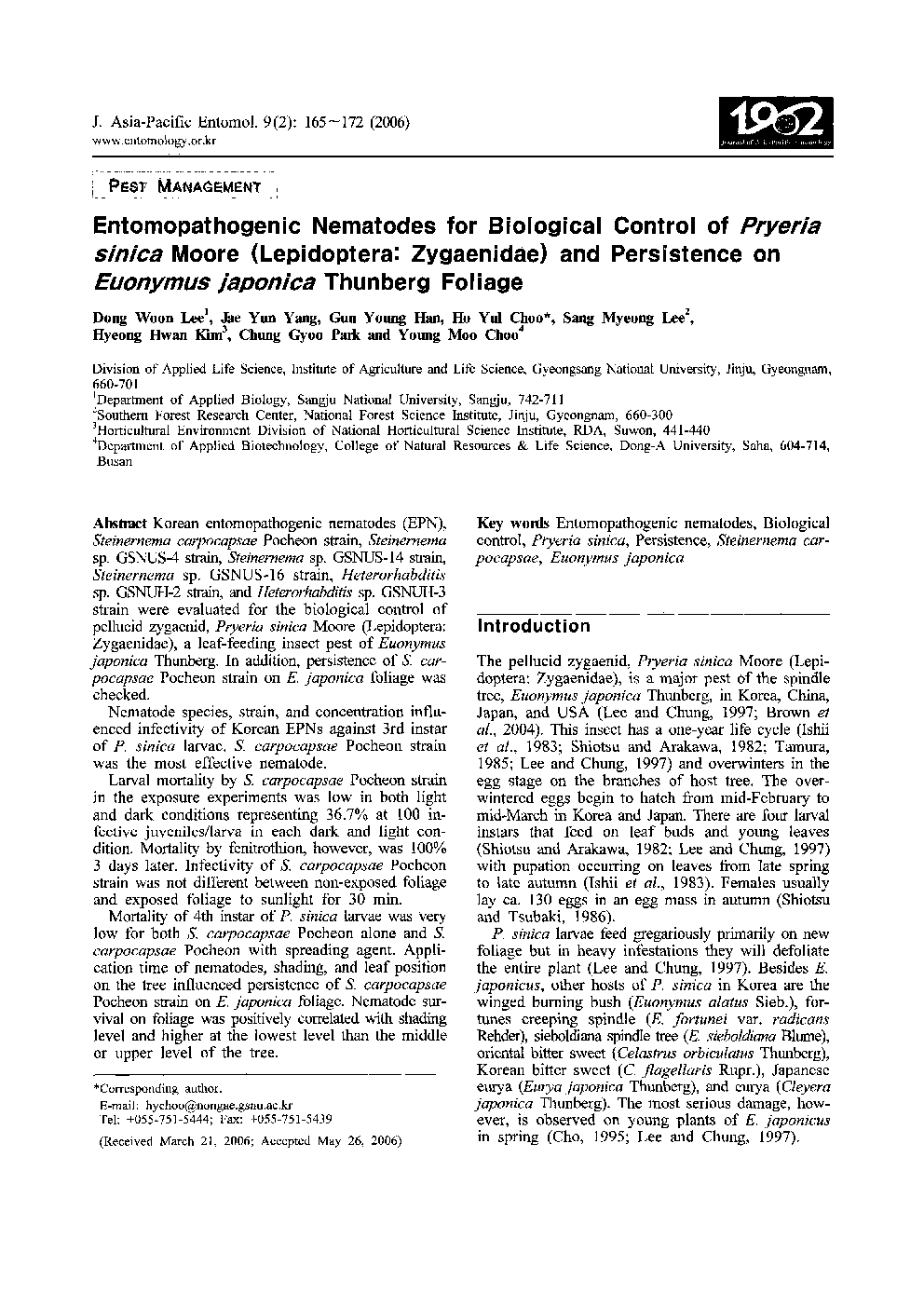| Article ID | Journal | Published Year | Pages | File Type |
|---|---|---|---|---|
| 4525191 | Journal of Asia-Pacific Entomology | 2006 | 8 Pages |
Korean entomopathogenic nematodes (EPN), Steinernema carpocapsae Pocheon strain, Steinernema sp. GSNUS-4 strain, Steinernema sp. GSNUS-14 strain, Steinernema sp. GSNUS-16 strain, Heterorhabditis sp. GSNUH-2 strain, and Heterorhabditis sp. GSNUH-3 strain were evaluated for the biological control of pellucid zygaenid, Pryeria sinica Moore (Lepidoptera: Zygaenidae), a leaf-feeding insect pest of Euonymus japonica Thunberg. In addition, persistence of S. carpocapsae Pocheon strain on E. japonica foliage was checked.Nematode species, strain, and concentration influenced infectivity of Korean EPNs against 3rd instar of P. sinica larvae. S. carpocapsae Pocheon strain was the most effective nematode.Larval mortality by S. carpocapsae Pocheon strain in the exposure experiments was low in both light and dark conditions representing 36.7% at 100 infective juveniles/larva in each dark and light condition. Mortality by fenitrothion, however, was 100% 3 days later. Infectivity of S. carpocapsae Pocheon strain was not different between non-exposed foliage and exposed foliage to sunlight for 30 min.Mortality of 4th instar of P. sinica larvae was very low for both S. carpocapsae Pocheon alone and S carpocapsae Pocheon with spreading agent. Application time of nematodes, shading, and leaf position on the tree influenced persistence of S. carpocapsae Pocheon strain on E. japonica foliage. Nematode survival on foliage was positively correlated with shading level and higher at the lowest level than the middle or upper level of the tree.
